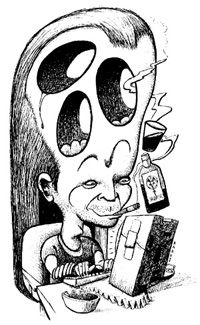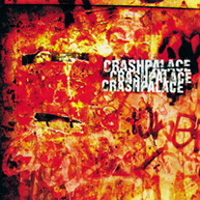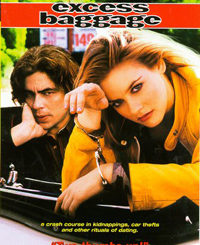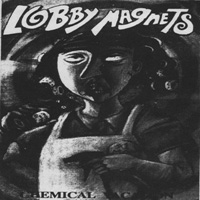 Lollipop: The Wonder Years
Lollipop: The Wonder Years
by Scott Hefflon
illustration by Kevin Banks
On the eve of the third year of publishing Lollipop, those few of us who have weathered the storm (and stormed the whether) set upon the seemingly innocuous task of trying to make sense of it all. After looking up the word innocuous, the deed seemed doable. Job: Write a harmlessly fluffed-up article about The Lollipop Kids, the colorful munchkins of the magazine biz, and the trials and tribulations they’ve experienced along the unevenly-paved Yellow Brick Road. Almost immediately, the story became unclear: You can’t roll the credits ’til the movie’s over, nor can you write obituaries for those who refuse to die. The alternative, excuse my French, would be to write a tabloid gossip/slander column – low art at its finest. It seems our grotesque-yet-charming munchkins with the cosmetically-enhanced sneer never made it to Oz. The ongoing picnic in the poppy fields has had its highs and lows, but what journalist of merit would be able to pull off a Little House on the Prairie-esque story given this motley crew of decadent and media-mainlining runts? Answer: None, that’s why I got stuck with writing this retrospective. To steal a quote from the Muppets (yet another puppet journalist metaphor), “Getting there is half the fun, come share it with me. Movin’ right along, du-ga-dune, du-ga-dune.”
Lollipop began as a “wouldn’t it be nice” idea, brought up by a friend of mine, Karen Granaudo, back in 1993. This is the first time her name has been in the magazine since issue three, so you’re welcome to come to your own conclusions. Once we determined that statewide didn’t need a hyphen, we were well on our way to creating an edgy, flamboyant ‘zine covering sung and unsung heroes from all over New England. In English, that means reviewers from all over the area would review unsigned bands from all over the area and be published in a magazine that would be distributed all over the area. Sounds like a good idea, doesn’t it? We thought so too. Karen and her cronies brought the idea to me and my friend/roommate Bob Butman. It’s been since issue ten (twelve, officially) that he made a significant contribution to the magazine. That represents a year and a half of Lollitime and, despite the less than civil parting of ways between the two of us, will always be noted and appreciated.
In retrospect, Karen probably brought the idea of a pre-named magazine to me because she liked my writing and was under the impression that I knew lots of people. My mailing address was, generally speaking, Boston, so perhaps living in The Big Bean gives non-city folk the impression that you know people. Whatever. Again in retrospect, I think I did know a lot of people – hard-partying unknowns with a wide variety of untapped creativity. That got us through the first few issues.
By then, most of the start-up crew had spent their pent-up load and lay rotting like dried husks in the wake of an almost one-year-old magazine. Sad, but true enough to print. While sitting in a not-especially comfy chair at the tail end of my third lease since Lollipop began, its all too easy to gloss over the efforts of the innumerable people who bailed out along the way. So that’s exactly what I’m going to do.
The early years at Lollipop really sucked, and so did the magazine. We’re still in the early years as far as I’m concerned. That’s another story. One of the many flaws of the magazine was that it was being run by me. Another of the flaws was that nobody knew, or really cared, what it was we were trying to do. Hell, I’m not so sure even we knew, we just wanted to do it.
In 1993, Boston already had its established Boston papers/’zines, and the community (excuse me while I cough) was not exactly doing cartwheels at the prospect of yet another young upstart. Especially one run by unknowns who had yet to pay their dues. Yup, that was definitely a problem. In truth, or at least what passes for it in this line of work, people were very right for not welcoming us with open arms. We had no legitimate right to be publishing a ‘zine: We hadn’t yet chummed up with all the clubs, promoters, retailers, and big bands in town. I wasn’t even aware of all the sacred cowness this city fosters, so I doubt I was pro-actively community-oriented enough to make a favorable impression. I was a young idealist who thought a good concept, some hard work, and some fresh talent were all it was going to take. Duh. Then came the still-insurmountable hurdle of trying to organize a bunch of flaky freelance show-offs and make something somewhat coherent out of it. We’re still trying to do that.
Since none of our small slackerstaff knew diddley about how to actually make a ‘zine (design, layout, take to printer, distribute), we relied upon the expertise of the Editor and the Publisher of Core Magazine, Kerry Joyce and Ed Levy respectively, who’d just put out the second issue of their humor magazine. I buddied up with two the wacky Needam/ Framingham gents more than the “inner circle” who were less enthusiastic and receptive to our potential project. (Doug Thoms turned me over Joe Bonni who told me rapidly of his own troubles – so that was the post-“Hair Issue” #3 Pit Report‘s welcome, prior to Doug’s quitting and the magazine’s renaming itself Endangered Species – and I got T Max’s answering machine each time I called The Noise.) So Core‘s Ed Levy taught design and layout techniques to Dave Dawson, a Mass Art illustration graduate. Dave was designing ads, posters, and a huge 3-D sign for two ex-roommates of mine, Jeff Pare and Jake Dalbec, who were opening a pet store on Newbury Street that has since gone out of business, and he agreed to be our art director. After designing the first two issues, as well as a couple of the logos we still use to this day, Dave departed for greener pastures than independent publishing. That could, and probably should, have been the end of Lollipop.
By issue three, I’d figured out how to layout a “it’ll do for a freebie piece of shit magazine” with the help of aaron dalbec (undercase intentional) – who could cut a straight line with an Exacto blade – and Bob, and Scott “Opie” Jablonski. We were getting a few (well, two) national releases by this time – it seems all my 50-some-odd issues mailed to big labels was really paying off – and some (well, a few) of our advertisers were actually paying for their ads. While most industry people (I use the term loosely) and our readership (ditto) still had little idea what to make of us, Lollipop was, even then, printing quite a few pieces of fiction, essays, artwork, movie reviews, book reviews, comic reviews, and even some surprisingly good poetry. Sure, I still wrote almost all of the music reviews, but success, fame and fortune seemed just over the horizon. I’ve always had bad depth perception.
Issues four through six showed some serious growth in look and feel. It’s not really that we knew what we were doing, it was more that more people were starting to come on board. The good ship Lollipop didn’t look like it was going to go under as quickly as many had anticipated, and a few more good writers and artists were willing to work with us. Laura Kallio, our token college graduate, continued to tell us where to stick our commas, as she has every joyous issue ever since. The cover of issue four was the first I’d ever assigned, and while artist Chris Garniewicz has only contributed a few times to the magazine, his cover represents the beginning of the zany color illustrations that have become part of Lollipop‘s identity. Two years later, he finally delivered my leather jacket with his cover painted gloriously on the back. Fellow indie publishers Core called it quits after four issues, and Lollipop quickly invited Editor Kerry Joyce and artist Kevin Banks to work on the magazine. Kerry consistently cranked out insane fiction and the meatiest essays ever to appear in this magazine, as he still does. Kevin began doing covers, centerpieces, and spot illustrations that set the standard for illustrators to this day. He was so damn prolific, Boston’s alternaweekly, the Phoenix, offered him gobs of money to go work for them. Kevin still occasionally has a lapse in judgment and slides us a drawing we are only too happy to print.
Our coverage of unsigned music was, by this point, mostly Boston-based. Despite the good intentions of its originators, covering music from Boston, in Boston, seemed so much easier than risking yet another road trip to central or Western Mass to see bands that unreliable sources said were good. Road trips invariably were strewn with disaster: Poor planning, sucky bands, car trouble, and general apathy. Local hotshots copping attitude about their dwindling scene is not something you need to drive hours to see; you can saunter into almost any beer dive with a stage and find arrogant, go-nowhere bands “with a following” of drunken laborers who would sooner kick someone’s ass than buy a badly-produced demo tape.
By issue six, we were covering over a dozen national CDs per month! Hurrah! We also ran our first major label ad for Atlantic Records, thus embarking on the downward spiral of label whoredom you have come to know and loathe from Lollipop. Off-key rounds of “We’re in the money! We’re in the money!” sounded briefly. Then we sobered up.
The First Anniversary Issue summed it up best saying, “In spite of wrecking our truck (that makes three vehicles in a year), losing our home and burning out everyone (including 2 pets, 8 roommates, and two partners), we made it to our ONE YEAR ANNIVERSARY.” The little snippet went on to thank all the contributors, advertisers and readers, as well as boast various promises of growth, wildness, and other such drivel. I really don’t remember much after that. It’s all kind of a blur of pissed-off staffers leaving, eager staffers joining, CDs coming in, ads almost paying for this monstrous growth of a pretty good idea, great pieces of mind-blowing writing, reviews that are far more entertaining than the CDs themselves, booze, sex, chaotic parties, throwing up on myself while in deep contemplation, more booze, more staff changes, more car crashes, different offices, writers in rehab, freakouts galore, new faces, lost friends, more booze, some of the better one-liners I’ve read anywhere, attempts at oneness, more parties I don’t remember but sounded fun, glossy covers, national distribution, live shows I reviewed but can’t recall, non-linear conversations with sharp, articulate people I’d’ve never met otherwise, and a need to sum up this run-on sentence.
Thank God for Lollipop; the pay sucks but it sure beats working fast food or retail. I hope Lollipop has helped you in some way: Made you laugh, told you something you didn’t know, affirmed something you already knew, or just eased you through another day.



